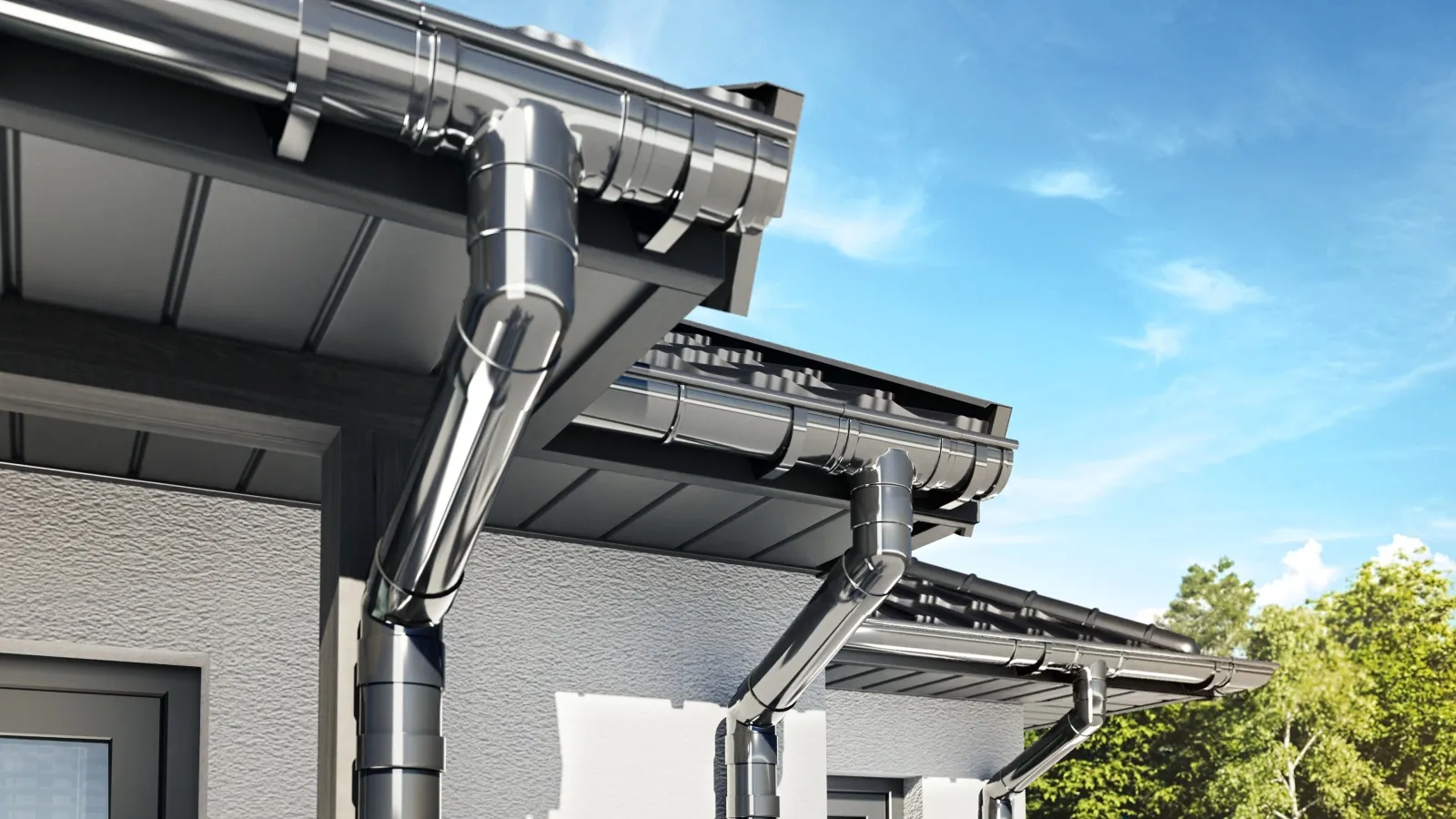What does a guttering system consist of?

The purpose of a guttering system is to drain water away from the roof. However, to ensure it fulfils its role and remains efficient for many years, it should consist of the right components – not only gutters and downpipes. Find out what else makes up a modern guttering system and what functions each part performs.
Basic elements of a guttering system
The two most important elements of every guttering system are, of course, the gutters and the downpipes. Gutters are open-profile components that run along the roof edge and collect water from the roof surface. It is through these gutters that water flows into the downpipes, which are responsible for discharging it away from the building.
But that’s not all. To ensure a guttering system (whether eavesless or traditional) is functional and durable, it should also include several other components, such as:
- gutter brackets – used to securely attach the gutters or other system parts to the fascia board or rafters
- outlets – connecting gutters with downpipes (including through outlets and end outlets)
- drainage spouts – mounted at the ends of downpipes to direct rainwater into the ground, a stormwater system or a closed rainwater tank
- corners – allowing gutters to be joined at the corners of a building
- connectors and fittings – such as tees, sleeves, reducers or elbows, which make it possible to join pipes or change their direction as needed
- pipe clamps – used to quickly and securely fix downpipes to the walls of the building
These are the components found in almost every rainwater system designed to collect and discharge water.
Additional gutter system elements
Some guttering systems require the use of extra components, which can improve the system’s performance, provide better protection, or make cleaning easier.
The most common include:
- inspection chambers – allowing easier cleaning and monitoring of downpipe flow
- gargoyles – used instead of downpipes to direct water away from building walls
- rainwater diverters – used in rainwater harvesting systems, enabling the collection of water into storage tanks
- gutter guards or meshes – preventing leaves and debris from clogging the gutter, helping to maintain smooth water flow
Materials used in guttering systems
If you are wondering which guttering system to choose, pay attention above all to the quality of the components. In particular, check the material – this will largely determine the system’s durability and efficiency.
The most commonly recommended solutions are made from coated steel sheet, which offers impressive resistance to mechanical damage, corrosion, and fading. They are not only durable, but also aesthetically pleasing and easy to install (steel gutters can be joined with special connectors or snap-on brackets).
Other popular options on the market include:
- aluminium – also resistant to corrosion and easy to paint, making them suitable for matching with the look and style of the façade
- PVC – recommended for those seeking a budget-friendly system; while resistant to weather conditions, their mechanical strength is not as high as steel or aluminium
- copper – highly durable and long-lasting
Have questions or doubts? Contact us – we will provide expert advice and help you invest in a high-quality Saxon Guttering System.
